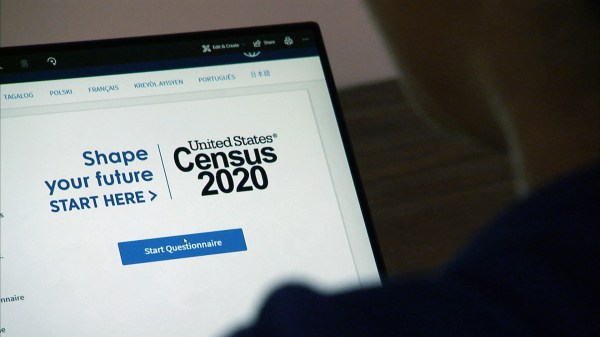Census Bureau IT systems processing 2020 response data better than expected

The Census Bureau began processing 2020 census response data earlier this month, prior to ending self-response and field data collection operations Oct. 15, and so far, IT systems are performing well, top officials say.
Necessary IT systems were tested on the bureau‘s original schedule, which predated collection delays caused by the coronavirus pandemic, so they were ready despite the response deadline shifting multiple times, officials said on a press call Wednesday.
A Data Quality Executive Governance Group made up of data collection and analysis experts from across the 2020 census team are evaluating all data, and early systems are exceeding expectations, they said.
“We’re actually running some aspects of it now, and we started running some aspects earlier in October that didn’t require completed data to run,” said Al Fontenot, associate director for decennial programs. “And our first reaction is some of those systems are actually running faster than we had anticipated and with less errors and less problems than we had anticipated in our plan.”
The bureau’s plan involves calculating the apportionment counts assigning states’ House seats based on population, before preparing more complex redistricting data for state legislatures. With previous censuses, both tasks were done simultaneously.
While the bureau is legally obligated to provide its first census results by Dec. 31, Fontenot said his team has only committed to coming “as close as possible” to allow for flexibility if problems, IT or otherwise, arise. Redistricting data is normally due three months later.
“Now that data collection is finished, we have a very strong sense that all of the early performance metrics we’ve shared indicate that a very good census, if not an accurate census, was conducted during an unbelievable trying time for our nation,” said Tim Olson, associate director for field operations.
Officials cited the pandemic, hurricanes that hit the Atlantic and Gulf coasts, and nationwide civil unrest among the challenges to its census nonresponse follow-up operation. The Trump administration originally extended data collection to Oct. 31, only to move that back to Sept. 30 citing the Dec. 31 deadline.
A federal judge issued an order stating collection must continue through Oct. 31, but the Supreme Court intervened on Oct. 13 siding with the administration. The collection was ended Oct. 15 with 152 million addresses, or 99.99%, resolved compared to 99.8% during the 2010 census.
“We heard from a lot of critics that our internet response option would fail, and it would become Healthcare.gov 2,” Fontenot said. “I’m happy to say that our internet self-response option managed our highest traffic demand and operated successfully throughout the census without one second of downtime.”
Of the more than 99 million housing units — 67% — that self-responded to the census, 79 million, or 79.86%, used the internet option.
The bureau relied on assignment management software to determine the most efficient routes for its enumerators based on availability, resulting in them resolving 1.92 cases an hour compared to 1.01 cases during the all-paper 2010 census.
Paper responses continue to trickle in and will be accepted if postmarked by Oct. 15 and received by Oct. 22, but those won’t delay data analysis, Fontenot said.
Officials would not say whether President Trump‘s memo directing the bureau to exclude undocumented immigrants from apportionment would be feasible, only that apportionment will be completed separately from any aspect of the memo.





